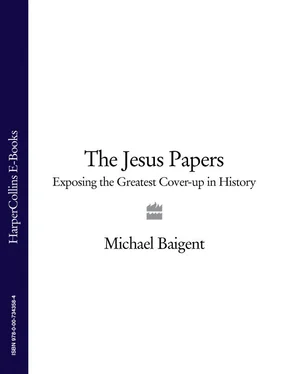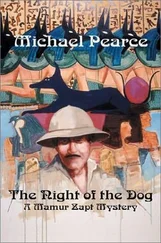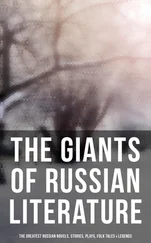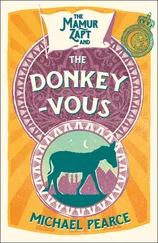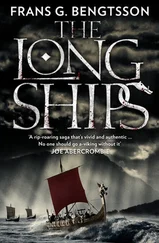When looking at the genealogies of these princes of the Line of David in the south of France, we discovered that they were the same figures as the ancestors of one of the leaders of the First Crusade, Godfrey de Bouillon, who became the king of Jerusalem. 5 There had been four great noble leaders of this crusade. Why was Godfrey de Bouillon alone offered the throne, and offered it by a mysterious and still unknown conclave of electors that assembled in Jerusalem to rule over the matter? 6 To whom would these proud lords have submitted, and for what reason? We argued that blood took precedence over title—that Godfrey was reclaiming his rightful heritage as a member of the Line of David.
And what was the source of this bloodline? Well, from Jerusalem, from Jesus, the result of—we argued in Holy Blood, Holy Grail— a marriage between Jesus and Mary Magdalene. 7 In fact, we wondered, was not the marriage at Cana that of Jesus and Mary? At the very least, that would explain why he was “called” to the wedding and subsequently had the responsibility over the wine! Naturally, with the publication of our book, worldwide controversy erupted.
“Mr. and Mrs. Christ,” wrote one commentator, searching for a smart sound bite. And as sound bites go, it was rather a good one.
That was in 1982. In 2002, Dan Brown published his novel The Da Vinci Code , which draws in part from our books’ theories. A media circus erupted once more. “Mr. and Mrs. Christ” were back in the news. It was clear that people still had a hunger for the truth behind the gospel legends. Who was Jesus really? What was expected of him? The world still clamors today for clarity about Jesus, Judaism, Christianity, and the events that took place two thousand years ago.
Since the publication of Holy Blood, Holy Grail , I have had twenty-two more years to reflect on these very questions, to do more research, and to reassess the history and implications of those events. In other words, two decades of research over and above what is explored in The Da Vinci Code . Here I endeavor to reconstruct my twenty-two-year-long journey of discovery, taking readers down each path with me—some paths leading to dead ends, others to great realms of possibility. All paths lead to a broader understanding of the life of the man we call Jesus, as history proves he lived it, not how religion says he did.
The data I present herein need to be read at your own speed. Each of the building blocks of my explanation should be considered in your own time. This is extremely important, for when long-held beliefs are being challenged, as they are here, we need to be able to justify each step taken along the way so as to be clear about why we have taken them. For that way, we can be confident in where we stand on the issues in the end. A questioning, contemplative read will allow you to wade through the new findings in such a way that you will ultimately make your own choices and hold firm your own beliefs. If you’re ready for that journey, let’s start now.
My telephone rang. It was about 10:00 a.m. I remember the sun dappling the wall before me. It sparkled. It was the perfect day to be in an English country village.
“Can you get the next train to London? Don’t ask why.”
I groaned silently: wall-to-wall cars. Scarce taxis. Noise, pollution, crowded subways. A day spent either inside rooms or traveling between them, the sun a distant memory.
“Sure,” I replied, knowing that my friend would never have made such a request unless it was important.
“And can you bring a camera with you?”
“Sure,” I replied again, vaguely bemused.
“And can you hide the camera?”
Suddenly he had my attention. What was up? My friend was a member of a small and discreet group of international dealers, middlemen, and purchasers of high-value antiquities—not all of which carried the required paperwork permitting them to be traded on the open market.
I put a camera and some lenses in a standard-looking briefcase, threw in plenty of film, and jumped in my car for the drive to the station.
I met my friend outside a restaurant in a famous London street. He was an American, and with him were two Palestinians, a Jordanian, a Saudi, and an English expert from a major auction house.
They were all expecting me, and after brief introductions the expert from the auction house departed, apparently not wishing to be involved in what was to happen. The rest of us walked to a nearby bank, where we were quickly led through the banking hall, along a short corridor, and into a small private room with frosted windows.
As we all stood around a table placed in the middle of the room, making desultory small talk, the bank officials carried in two wooden trunks and laid them down before us. Each trunk bore three padlocks. As the second was carried in, one of the officials said pointedly, as if “for the record”: “We don’t know what is in these trunks. We don’t want to know what is in them.”
They then brought a telephone into the room and departed, locking the door behind them.
The Jordanian made a telephone call to Amman. From the little conversation that ensued (which was in Arabic), I gathered that permission had been requested and obtained. The Jordanian then produced a set of keys and unlocked the trunks.
They were stuffed full of exact-fitting sheets of cardboard. And on each sheet, I was horrified to note, there were hundreds of pieces of papyrus text roughly fixed to the cardboard by small strips of clear adhesive tape. The texts were written in Aramaic or Hebrew. Accompanying them were Egyptian mummy wrappings inscribed in demotic—the written form of Egyptian hieroglyphics.
I knew that it was common for such wrappings to bear sacred texts, and so the owners of this hoard must have unwrapped at least a mummy or two. The Aramaic or Hebrew texts looked, at first sight, like the Dead Sea Scrolls, which I had seen before, although they were mostly written on parchment. This collection was a treasure trove of ancient documents. I was very intrigued and increasingly desperate to let some scholars know about their existence, perhaps to secure access for them.
As the cardboard sheets were removed from the trunks, I was told that the owners were trying to sell the documents to an unspecified European government. The price asked was £3 million (approximately $5.6 million). Those present wanted me to take a representative selection of photographs that could be shown to the prospective buyer in order to move the sale one stage further toward a successful conclusion. I then realized which government was the most likely to be interested. But I kept my thoughts to myself.
Over the next hour or so, as the trunks were emptied, certain pages were pointed out to me, and standing on a chair, by the soft light filtering through the frosted windows, I took black-and-white photographs. In all, I shot six rolls of thirty-five-millimeter film—over two hundred photographs.
But I was becoming increasingly anxious that these documents might simply vanish into the limbo from which they had emerged. That they might be bought by some purchaser who would sit on them for many years, as had happened with the Nag Hammadi texts and the Dead Sea Scrolls. Or worse, I feared that without a purchaser, they might simply disappear back into the deepest, darkest recesses of the bank, joining the many other valuable documents known to be locked away in safe-deposit boxes and trunks around the world.
It seemed likely that since I had taken a lot of photographs, and since no one would be counting, I would be able to hide at least one of the rolls of film so that there might be at least some proof that this collection even existed. I successfully slipped one into a pocket.
Читать дальше
